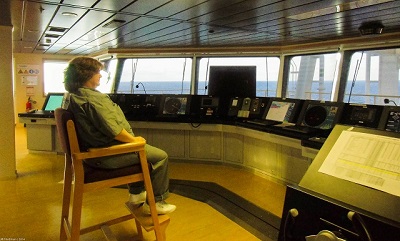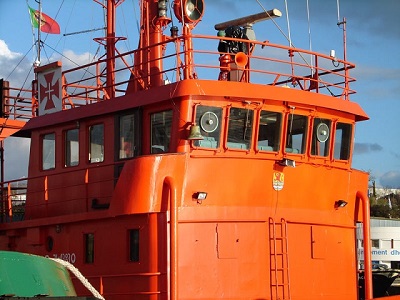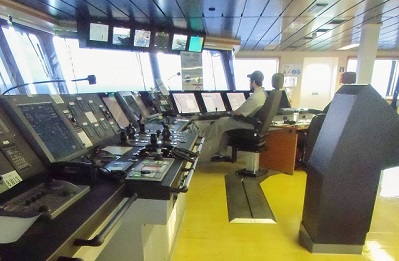[Exclusive] Bridge Windows are Just for the Romantics

(2).jpg) Many of the criticisms of the industry’s move to the mandatory use of ECDIS relate to the dangers of an over-reliance on an electronic system at the expense of looking out of the bridge windows. However, the Nautical Institute recently released a report describing the problem in reverse.
Many of the criticisms of the industry’s move to the mandatory use of ECDIS relate to the dangers of an over-reliance on an electronic system at the expense of looking out of the bridge windows. However, the Nautical Institute recently released a report describing the problem in reverse.
In The Navigator Issue 5, the institute describes a case where a bulk carrier ran aground when the navigator adjusted course to avoid collision with two vessels. He was relying on the ECDIS to activate an alarm and warn him of any danger of grounding. The ECDIS unit did detect the risk of grounding as the bulk carrier moved towards shoal ground and a visual warning was activated. However, the ECDIS display was set up so that the officer on watch had to face to starboard to see the screen. Because he was looking ahead at the other vessels, rather than at the screen, the officer did not see the alarm. The audible alarm was not connected and so failed to alert him.
 A safety contour of 10 metres had been set on the main ECDIS unit, but this was inadequate for the conditions as the sailing draught of the vessel was 10.63 metres. None of the bridge officers had received familiarisation training for the type of ECDIS fitted on board, so they did not question the inaccurate contour setting, states the Nautical Institute’s report.
A safety contour of 10 metres had been set on the main ECDIS unit, but this was inadequate for the conditions as the sailing draught of the vessel was 10.63 metres. None of the bridge officers had received familiarisation training for the type of ECDIS fitted on board, so they did not question the inaccurate contour setting, states the Nautical Institute’s report.
That is an interesting assessment of the situation, as the need to undertake multiple system-specific ECDIS training courses has also come under criticism. For officers like Jill Friedman, freelance mate, the need to undertake many ECDIS courses is a problem, especially when she may not know in advance of a contract what particular system will be on board. “I really can't see the justification for forcing us all to spend who knows how much more of our time off and money to take more classes. We already have to have a generic ECDIS class (ashore, of course), to sail…These systems are not all that different.”
 It is easy to see that being comfortable with computers is an advantage on the bridge. For Captain Yuriy Malanin, a seaman with 20 years of experience as a master of German heavy lift vessels, computer literacy is a big issue. He believes a young navigator with little experience as navigator but with good computer knowledge has more chance of being a good navigator than a seaman experienced as a navigator but with a lack of computer literacy.
It is easy to see that being comfortable with computers is an advantage on the bridge. For Captain Yuriy Malanin, a seaman with 20 years of experience as a master of German heavy lift vessels, computer literacy is a big issue. He believes a young navigator with little experience as navigator but with good computer knowledge has more chance of being a good navigator than a seaman experienced as a navigator but with a lack of computer literacy.
That may become increasingly true in the future. The EU funded Model-Based Cooperative and Adaptive Ship-based Context Aware Design (CASCADe) project is now underway with the aim of reducing human error on the bridge. One participant, Raytheon Anschuetz, has proposed a vision where the bridge is operated by voice and movement, similar to a Nintendo Wii. Another, BMT Group, would like to see adaptive bridges that supply the right information at the right time. For example, if the vessel is berthing then a different set of information would be prominent compared to when it is out in the open sea.
 Would these technologies, or more ECDIS training, really have helped the navigator of the bulk carrier? If not, there is always the future prospect of unmanned ships that is being seriously discussed by some in the industry.
Would these technologies, or more ECDIS training, really have helped the navigator of the bulk carrier? If not, there is always the future prospect of unmanned ships that is being seriously discussed by some in the industry.
The Nautical Institute's report can be read here.
Photo Credit: Jill Friedman
